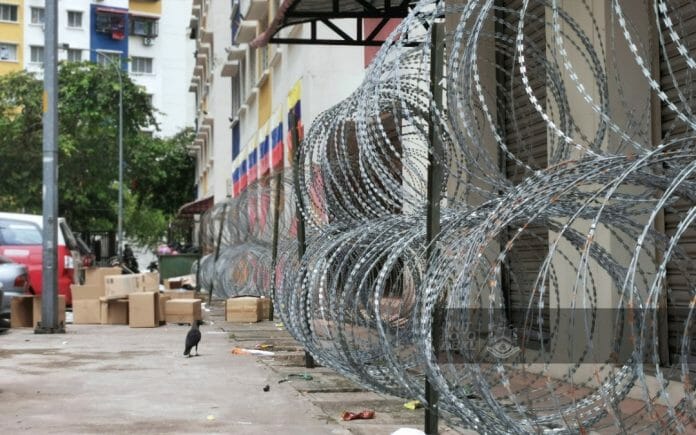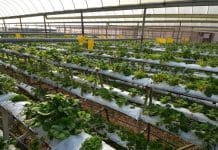By Dr Rais Hussin & Jason Loh,
In an EMIR Research article “Lockdowns – what’s the real issue?” (July 14, 2021), we explained and reiterated the fundamental reasons why lockdowns are necessary. Here we propose to outline some of the strategies and tactics for enhancing the effectiveness of lockdowns.
Firstly, the Director-General (DG) of the Ministry of Health Tan Sri Noor Hisham Abdullah has confirmed that the term, “sporadic” doesn’t necessarily mean not workplace-related but only that at present, we can’t as yet positively identify the case or outbreak with a workplace cluster.
Logically and evidentially, it’s still possible for there to be a link between workplace clusters and community transmissions. The dormitories are usually located outside the workplaces (mainly for factories, unlike construction sites).
The DG has said that screenings which yielded community clusters included screenings at the workplaces also. It’s worth quoting him in full:
“Sporadic cases mean cases that have been detected in the community, and cannot be linked to any existing clusters. These sporadic cases are detected from screening activities at workplaces and the community. What is worrying here is that many sporadic cases do not have symptoms and they are able to infect anyone near them if they do not adhere to Covid-19 standard operating procedures” (“Covid-19: Nearly 70% of cases are sporadic, almost half detected in Klang Valley”, The Star 21 June, 2021).
This brings us to the underlying definition of a “cluster” – defined as the formation of two or more cases. A cluster indicates both the source and verifiable extent of transmission. The two limbs (i.e., source and verifiable extent) are correlated or inter-dependent on each other. The source indicates where the transmission “started” and the extent indicates the number of people that are infected and potentially infected.
The existence of a cluster, in turn, is dependent on contact tracing. This is critical for understanding – if the data is to be properly interpreted, especially for policy-makers.
The screening which leads to contact-tracing consequently informs the definition of “sporadic” or community cases – which means that merely because a case or the cases can’t be traceable to an existing workplace clusters doesn’t mean it didn’t happen at the workplace.
It only means that under the contact-tracing – based on the MySejahtera app – the categories of close contacts are made according to the levels/tiers of transmission risk, i.e., A to D, with E referring to individuals who are not related to any of the preceding categories.
Recently, the Public Health Advocacy Alliance has been calling on the government to urgently tackle the issue of workplace clusters (as reported in “Curb clusters at workplace to break virus chain”, New Straits Times, June 19, 2021).
Professor Dr Jamal Hisham Hashim, Universiti Selangor (Unisel) visiting professor of environmental health, said that “Malaysia had recorded 75 per cent more cases from clusters compared with last year”. And of “the 1,372 out of 2,557 clusters (53.7 per cent) detected were linked to workplaces … [c]ases from workplace clusters contributed 59.7 per cent of all cluster cases (since Jan 25 last year)”.
Professor Dr Jamal said that there were 81 per cent more cases in workplace clusters in 2021 than they were in 2020 – and of the workplace clusters, 639 (46.6 per cent) clusters were from the manufacturing sector.
EMIR Research takes serious note of the views of the Federation of Malaysian Manufacturers (FMM) – which released its press statement on July 14. In the statement, President of FMM Tan Sri Soh Thian Lai has expressed concern that the industries are being scapegoated for the rise in Covid-19 cases (see e.g., “Don’t blame factories for being main source of infections, says FMM”, Focus Malaysia).
From a complementary perspective – Dato’ Dr Neoh Soon Bin (Managing Director of Soon Soon Group of Companies and Director of Lam Wah Ee Hospital) has called on the government to break the chain of infection at the workplace. He gave his views at the WOU (Wawasan Open University) webinar, “Covid-19 Mitigation at the Workplace” (March 1, 2021).
Combining a full MCO and EMCO with a targeted EMCO – under the existing/current framework – requires a multi-pronged strategy – that strictly bifurcates the districts/localities into industrial and non-industrial zones.
It requires that EMCO for industries, including construction, to be de-coupled from the wider EMCO measures – and hence properly targeted.
Within the targeted EMCO, only movement/mobility is restricted whilst operations continue (for Covid-19-free industries and sectors) subject to existing regulations (e.g., operating capacity as approve by the Ministry of International Trade & Industry/Miti under the CIMS/Covid-19 Intelligent Management System).
The recommendations will apply particularly to Selangor since the state has consistently contributed to around half of the daily infection cases.
These recommendations can also be replicated in the Federal Territory of Kuala Lumpur and Iskandar Malaysia in Johor – with similar population density and industrial concentration.
Any consideration for the tightening or loosening of the MCO for the industries will not necessarily be dependent on the wider area – as under the National Recovery Plan (NRP)’s three indicators of daily number of cases, ICU bed utilisation and vaccination rate (two doses) – and vice-versa.
Instead, the industries/sectors (classified as “essential” or allowed to operate) could be assessed based on the a) state-wide percentage and contribution of manufacturing and construction sectors to workplace clusters; and b) contribution of workplace clusters to the total.
So, while the rest of Selangor could be moving into Phase 2 under the NRP, factories and construction sites would remain under a targeted EMCO lockdown.
Factories and construction sites that (already) have clusters will be subject to a full MCO shutdown for between two weeks and one month (renewable for another two-weeks, if need be) – depending on the number tested, confirmed positive and vaccinated. The measure will move from self-quarantine to complete cessation of all operations.
So, whilst the wider locality or district or even state may experience a drop in the daily infected cases, an EMCO will still be imposed on the factories and workers’ dormitories concerned conceptualised as a single, integral bubble.
We call for an immediate targeted EMCO on all factories and construction sites in Selangor.
Towards that end, we propose the following stop-gap measures:
Following the Singapore model, the Ministry of Human Resources (MOHR) to work with employers to set up makeshift and improvised dormitories to be located either on site or in proximity to the factories that are allowed to operate (to create a travel bubble). All of the workers targeted here would be the foreign labour. The residual foreign workers can remain in their existing dormitories.
All workers would be subject to a targeted EMCO – either barbed-wire style with food and other provisions delivered or strict regulations (i.e., no outside movement other than to and from factories).
For factories that have been affected by Covid-19, these measures will take effect after the end of the full MCO period.
The ventilation setting for the dormitories should conform to the Department of Occupational Safety & Health (Dosh) of the MOHR’s newly released guidance notes on ventilation and indoor air quality (IAQ) to significantly reduce the risks of Covid-19 transmission.
The Construction Industry Vaccination Programme (Civac)’s on-site vaccination measures should be accelerated.
Mass testing to take place with the additional employment and deployment of labour inspectors (MOHR) and contract-tracers (Ministry of Health/MOH).
Self-testing under the supervision of the factory management should take place on a weekly basis. Heads of department and supervisors, etc. should be tasked to enforce the daily keeping of logs and conduct spot checks set against key performance indicators (KPIs).
The Medical Device Authority (MDA) has on July 14 provided conditional approval for use of Covid-19 self-test kits.
At the same time, under the Private Partnership Industrial Covid-19 Immunisation Programme (Pikas) –
Expand Model 2, i.e., on-site vaccination, for operating factories as part of accelerating progress for the industries and sectors (see “Emergency Covid response for KL and Selangor”, Dr Rais Hussin et al, 9 July 2021); and
Extend Model 2 to factories, construction sites and other workplaces that are not opened. Employees and workers can return to their respective workplaces to be vaccinated if they have yet to be vaccinated by then (see “Exit Strategy Building Block – Part 1”, Dr Rais Hussin et al, June 17, 2021, specifically Objectives 4 & 5).
Both a) and b) parallels the proposal by EMIR Research that vaccination centres (PPVs) conduct randomised mass-testing programme alongside the National Immunisation Programme (NIP) (see “Increase Covid-19 Testing Alongside Vaccination Campaign” by Dr Margarita Peredaryenko & Ameen Kamal.
All factories (in operation or closed) must undergo retrofitting of ventilation solutions and air purifier systems (alongside surface sanitisation).
The federal government is urged to cooperate, coordinate and consult closely with the state government and private sector – so that all the stakeholders can effectively play their respective roles.
Dr Rais Hussin & Jason Loh Seong Wei are part of the research team of EMIR Research, an independent think tank focused on strategic policy recommendations based on rigorous research.









